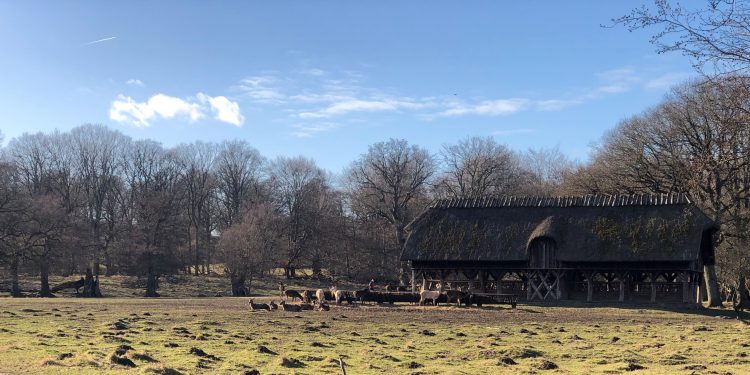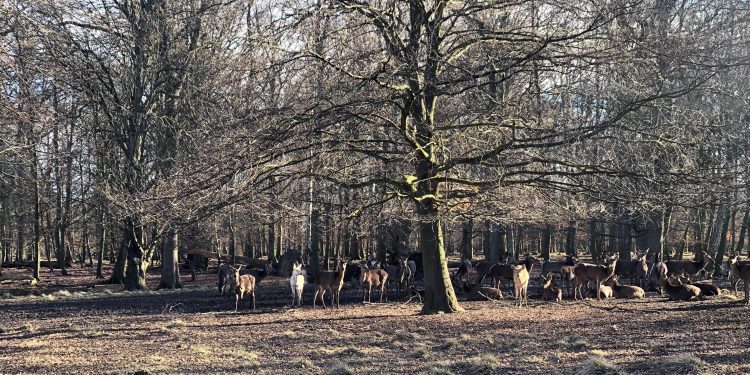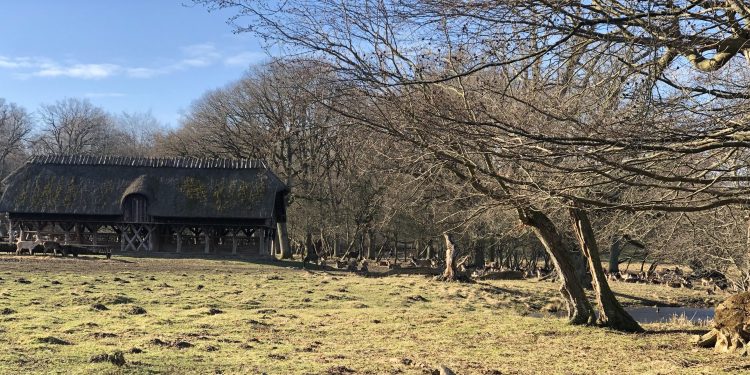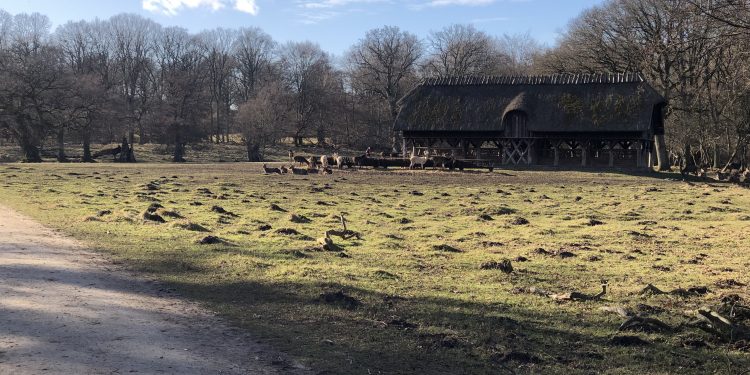Get close to the deer during the cold season at the Copenhagen Deer Park – Dyrehaven

A great excursion during the cold season is to take a walk, bicycle ride or horse carriage ride in this old, royal deer park.
The article continues below.
By Bente D. Knudsen
Dyrehaven and the Eremitage Hunting Castle belonged to the Royal family, and in 1669, the deer were fenced in by King Frederik III to make it easier for him to hunt there.
Today it is a public park with more than 2,100 deer of various kinds. It is a unique site where you can get a really close look at Bambi and his parents.
The autumn and winter seasons are great to do so because the deer are fed at several sites from where the audience can get quite close (while maintaining a respectful distance).
They are fed daily from November until April.
The deer gather around in large herds for protection and can often be seen running in the same direction if the herd leader decides to change location.
The park authority recommends staying at a distance and not to venture into their midst when they are gathered at their feeding stations.
However, at several locations the gravel path goes right down between them and are open to the public, at others they can only be seen from some distance.
You can even go on horseback if you enjoy riding. At Fortunen’s Riding School or at Mathessons on Strandvejen in Klampenborg you can rent ponies or horses by the hour.
The park has a detailed website with information about what to see and do in the deer park. Find it here.
The article continues below.
The deer have no natural enemies in the park and with more than 700 fawn born each spring, every year during the winter months more than 700 deer have to be shot to keep the park at its 2,100 limit.
The tasty venison is sold to local inhabitants and restaurants. Some deer are caught and exported live to other deer parks.
The deer in Dyrehaven are considered to be world class and during the rutting season ( in September/October), you will find nature lovers, photographers and journalists alike flocking to get an up-close look at the male deer, the stags.
According to Naturstyrelsen, responsible for the public park, Royal stags can be seen rutting in the southern part of the park from the middle of September to the beginning of October, whereas the rutting fallow deer will usually be on the Eremitage Plain around the end of October and the beginning of November.
Keeping a distance and avoiding disturbing them is highly recommended however.
The article continues below.
Take your bicycle with you to the deer park
At the main entrance you will find several small stalls selling warm drinks and inside the park the old cottage Peter Lieps Hus has both restaurant and cafe as well as snacks and coffee to go
Deer Park Info
You will find about 300 red deer, kronhjorte in Danish. They are the biggest of all the stags.
An adult stag can weigh over 200 kilos. The coat is reddish-brown in the summer and greyish-brown in the winter.
The hinds and their fawns stay mostly in the southern part of the Deer Park whereas the stags remain more to the north.
More than 1,700 fallow deer can be seen grouping together in herds as large as several hundred, usually seen on the open plains.
Their coats can be three different colours: black, white or a brownish-red, the brownish-red coats are the most common.
The deer were introduced from the Middle East and are mentioned in written sources as roaming about freely in Denmark as far back as 1231.
About 100 sikas complement the other two species. They are a little smaller than fallow deer.
Their summer coat is a chestnut colour with whitish-yellow spots, whereas their winter coat is an even dark brown (females) and black (males).
This breed, which has been in the Deer Park since 1923, was introduced from Japan. Source: Naturstyrelsen
Support our magazine with a contribution of any size
We do not want to put up a pay-wall, so we need your support and if you find our content relevant and worthwhile, we would value any contribution, however big or small, as a token of your appreciation of our efforts.
How to support:
Transfer any contribution to our bank account at: Your Danish Life/ Danish Expat Media Aps
Danske Bank account number: 3409 11405673 or Mobilepay to 21 44 12 24
Message: Support




